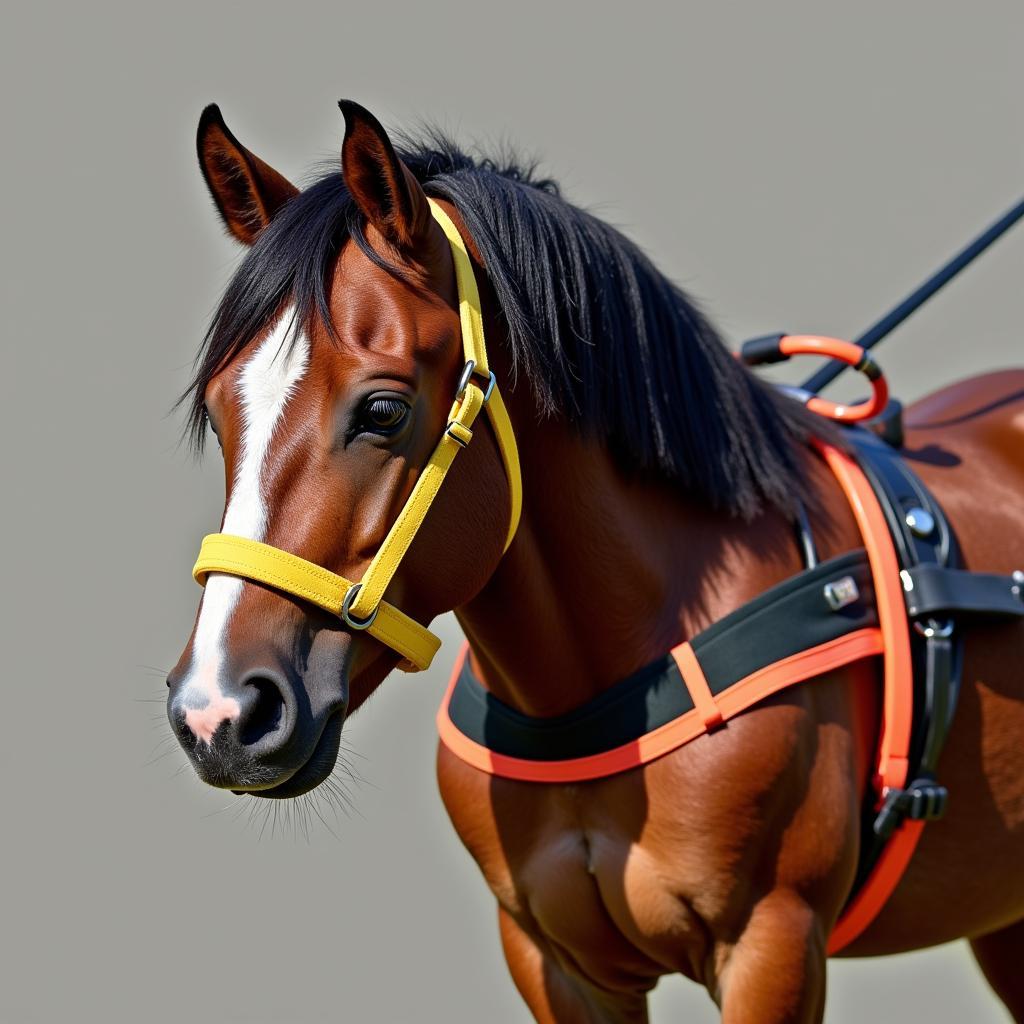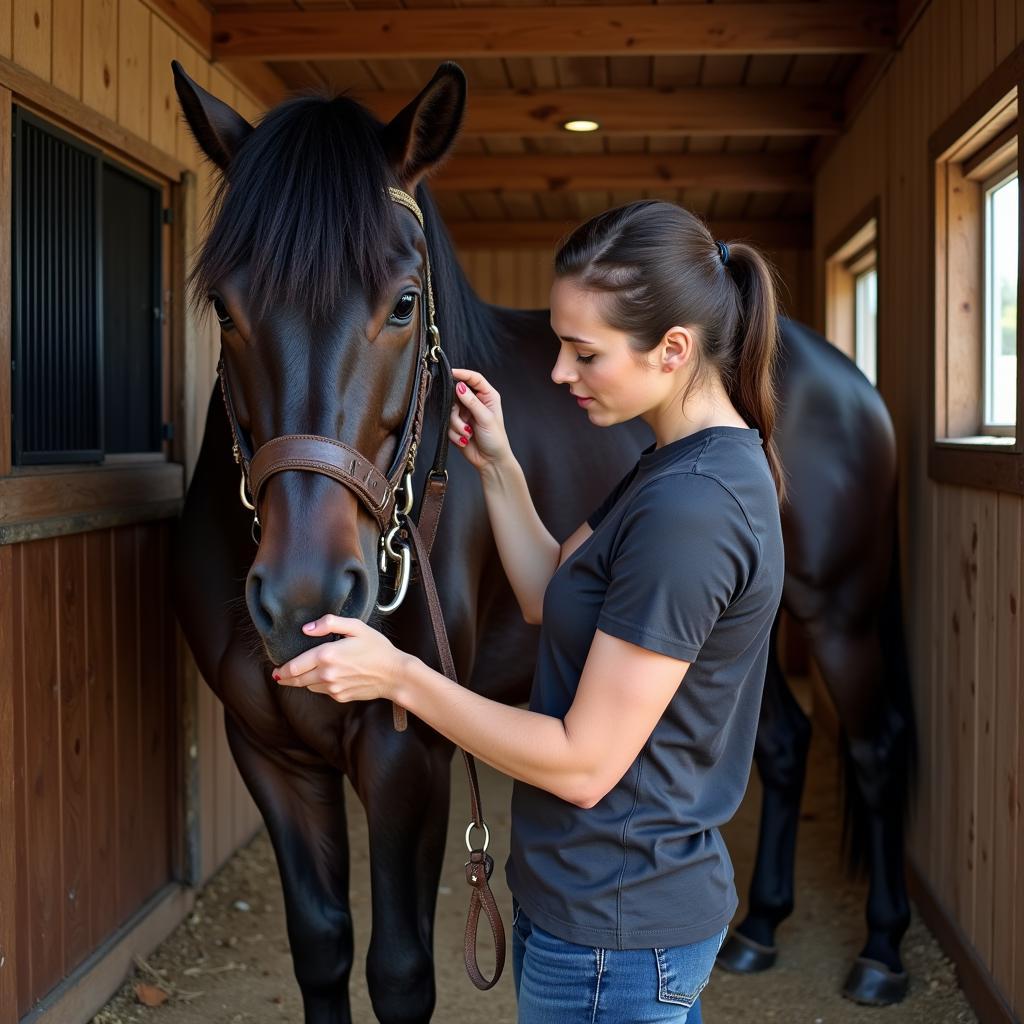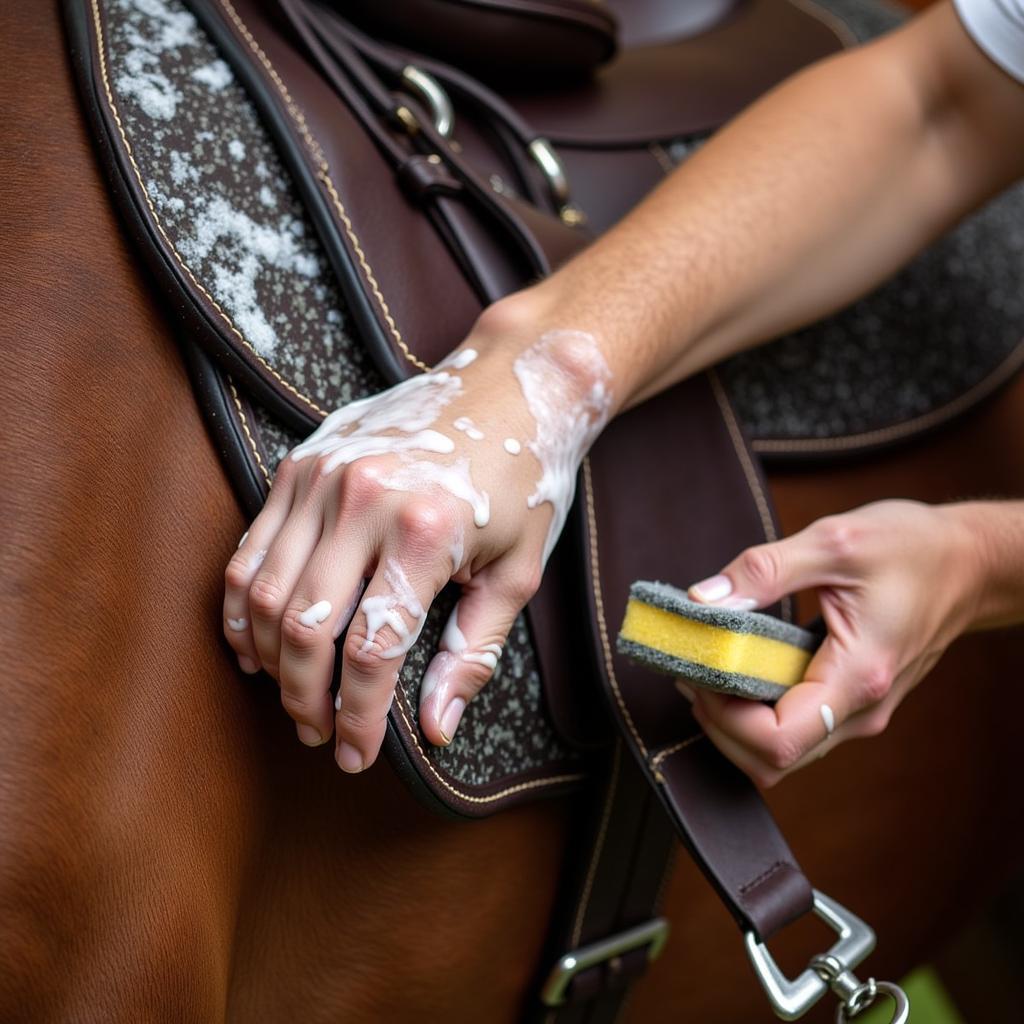Understanding the relationship between a Horse And Harness is crucial for any equine enthusiast. Whether you’re a seasoned carriage driver or just starting out with your first mini horse, choosing the right harness and ensuring its proper fit is paramount for both the horse’s comfort and your safety. This guide will delve into the intricacies of horse harnesses, from their various types and uses to proper fitting techniques and maintenance.
Types of Horse Harnesses and Their Applications
Horse harnesses are designed for a variety of purposes, each with its specific features and benefits. The type of harness you choose will depend largely on the work you intend for your horse to perform. For instance, a horse plow harness will be significantly different from a harness designed for driving.
Driving Harnesses
Driving harnesses are perhaps the most commonly seen type. They are used for pulling carriages, carts, and other vehicles. Within this category, there are several sub-types, including breastcollar harnesses, which are popular for lighter work and pleasure driving, and full-collar harnesses, offering more control and power for heavier loads. The mini horse cart and harness is a scaled-down version specifically designed for miniature horses, allowing these smaller equines to participate in driving activities.
 Miniature Horse in a Driving Harness
Miniature Horse in a Driving Harness
Work Harnesses
Work harnesses, such as the horse plow harness, are designed for heavy-duty tasks like plowing fields, logging, and pulling heavy loads. These harnesses often incorporate a heavy collar that distributes the weight evenly across the horse’s shoulders and chest, minimizing strain and maximizing pulling power. They are typically made from robust materials built to withstand the rigors of demanding work.
Riding Harnesses
While less common than driving or work harnesses, riding harnesses do exist. These specialized harnesses are designed to provide additional support and stability for riders, particularly those with disabilities or balance issues. They distribute the rider’s weight more evenly across the horse’s back and offer additional points of contact for enhanced security.
Fitting a Horse Harness Correctly: A Step-by-Step Guide
A properly fitted harness is essential for the horse’s well-being and performance. An ill-fitting harness can cause discomfort, chafing, and even injury. Here’s how to ensure a proper fit:
- Start with the Collar (if applicable): The collar is a critical component of many work and driving harnesses. It should fit snugly around the horse’s neck, allowing two fingers to fit comfortably between the collar and the horse’s windpipe.
- Adjust the Breastcollar or Saddle: The breastcollar or saddle should sit comfortably on the horse’s chest, distributing the pressure evenly. It should not restrict the horse’s movement or rub against the shoulders.
- Check the Traces: The traces connect the harness to the vehicle or implement being pulled. They should be adjusted so that they are neither too tight nor too loose.
- Fit the Bridle: The bridle should fit correctly, with the bit sitting comfortably in the horse’s mouth.
 Fitting a Draft Horse Harness
Fitting a Draft Horse Harness
“A well-fitted harness is like a well-tailored suit,” says Johnathan Miller, an experienced farrier and harness maker. “It should complement the horse’s build and allow for freedom of movement while providing the necessary support for the task at hand.”
Maintaining Your Horse and Harness
Regular cleaning and maintenance are crucial for prolonging the life of your horse harness. Leather harnesses should be cleaned with saddle soap and conditioned regularly to prevent cracking and drying. Synthetic harnesses can be cleaned with mild soap and water. Inspect your harness frequently for any signs of wear and tear, such as frayed stitching or cracked leather.
 Cleaning a Leather Horse Harness
Cleaning a Leather Horse Harness
“Just like you care for your horse, you need to care for your equipment,” advises Sarah Evans, a renowned equine veterinarian. “Regular maintenance not only extends the lifespan of your harness but also helps ensure the safety and comfort of your horse.” Remember, a well-maintained harness is a safe harness.
Conclusion
The relationship between a horse and harness is a vital partnership built on comfort, safety, and functionality. Understanding the various types of harnesses, ensuring a proper fit, and maintaining the equipment are all essential elements of responsible horse ownership. Whether you’re using a collar harness for horses or a draft horse in harness, prioritizing the well-being of your horse is key to a successful and enjoyable experience.
FAQ
- What are the different types of horse harnesses?
- How do I choose the right harness for my horse?
- How do I fit a horse harness correctly?
- How do I clean and maintain my horse harness?
- What are the common signs of a poorly fitting harness?
- How often should I inspect my harness for wear and tear?
- Where can I find dutch harness horses?
Need help with your horse and harness? Contact us! Phone: 0772127271, Email: [email protected] Or visit us at: QGM2+WX2, Vị Trung, Vị Thuỷ, Hậu Giang, Việt Nam. We have a 24/7 customer service team.